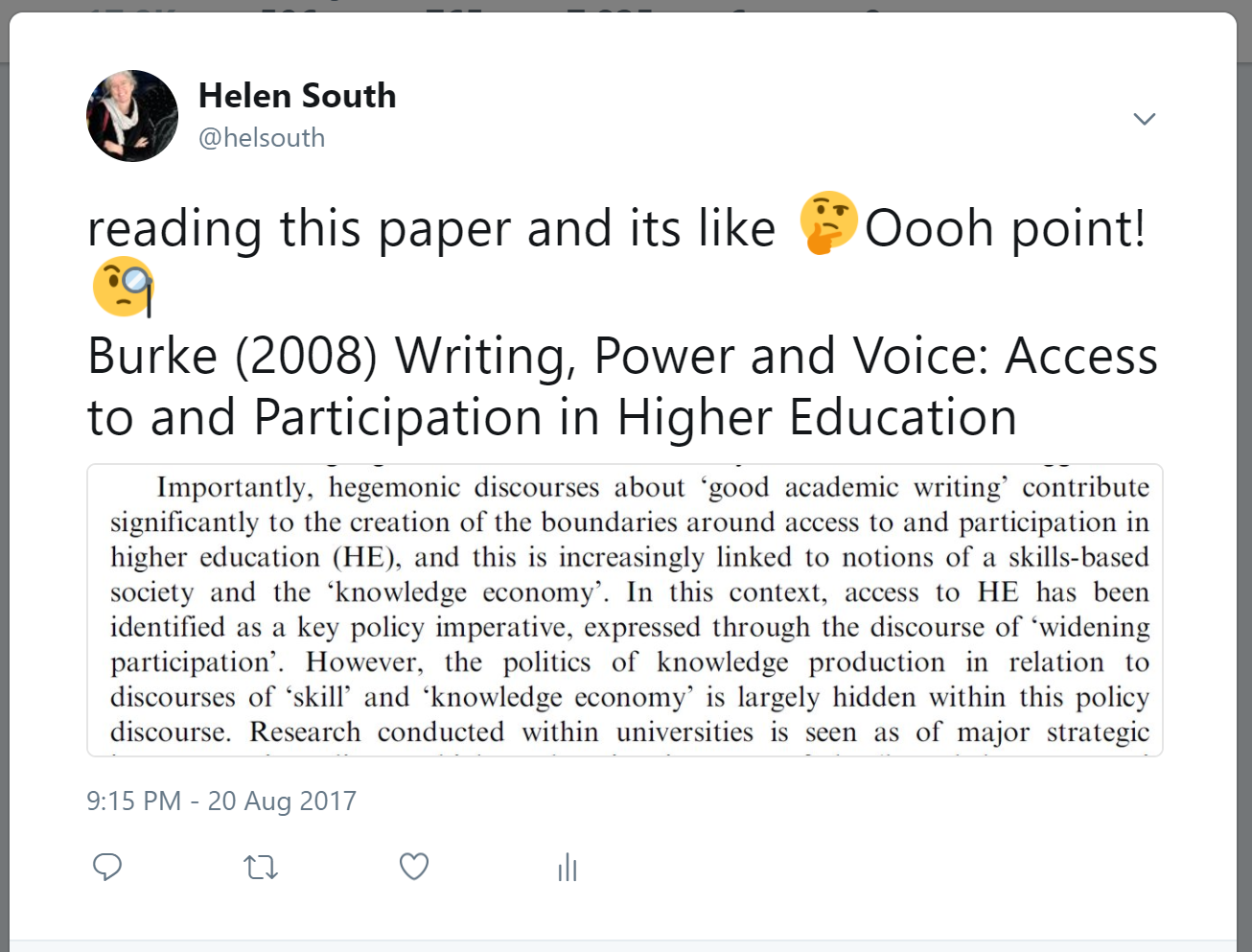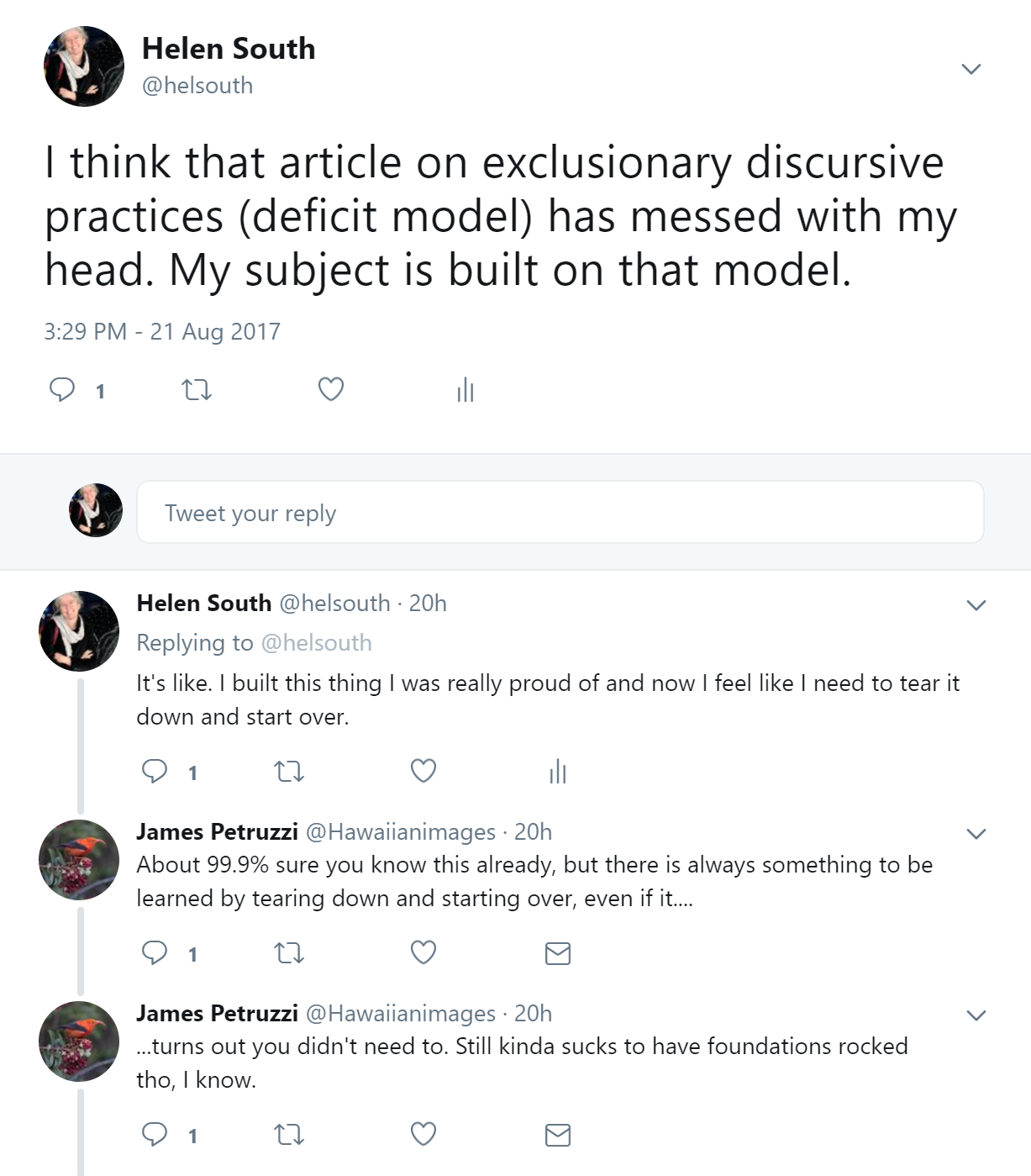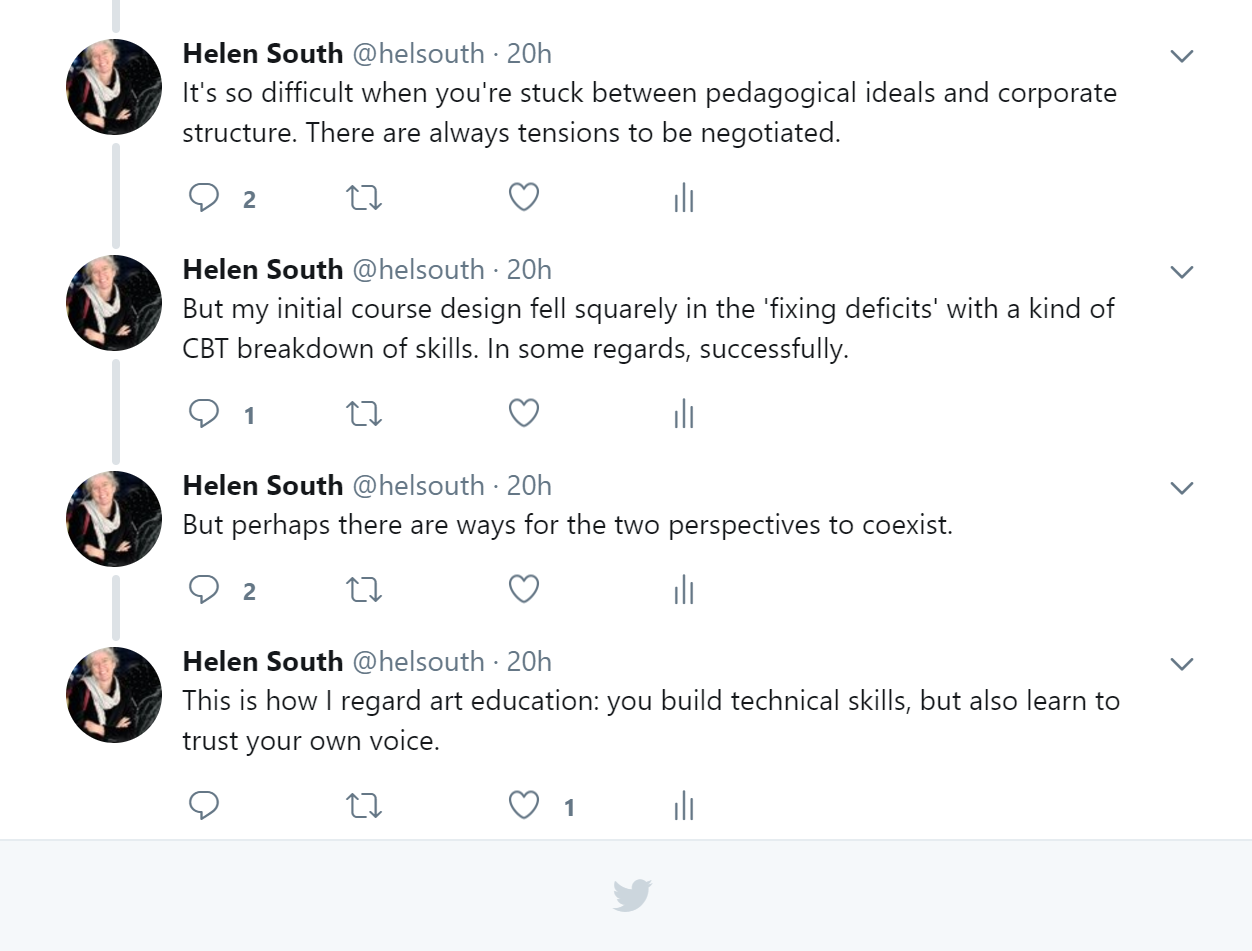Writing and Power
Burke’s 2008 paper, Writing Power and Voice: Access To and Participation in Higher Education has been pivotal for me. How my understanding of the issues raised in this paper will translate into practice remains to be seen, but it demands a radical rethink of my epistemological position.
An initial reservation is that my own work is situated in a highly institutional context, as is that of my students. Adult and Vocational Education takes students grounded in competency-based trade-training system, delivered by RTOs and TAFEs, and situates them abruptly within the broadly criterion-based university system. Students move from working in a behaviorist paradigm, with primarily psycho-motor skills – trades, crafts, and teaching face-to-face – transparent, observable, measurable (Norris, 1991) to a knowledge-based, postmodern, constructivist one.
The differences between the students at entry level and at graduation are encoded in the AQF specifications (Australian Qualifications Framework Council, 2013) . Students usually arrive at CSU with level 4 certification, able to “apply a broad range of specialized knowledge and skills in varied contexts to undertake skilled work and as a pathway for further learning” and with “cognitive skills to identify, analyse, compare and act on information from a range of sources”. They graduate from the Bachelor’s degree at level 7, able to “apply a broad and coherent body of knowledge in a range of contexts to undertake professional work and as a pathway for further learning” and possessing “a broad and coherent body of knowledge, with depth in the underlying principles and concepts in one or more disciplines as a basis for independent lifelong learning cognitive skills to review critically, analyse, consolidate and synthesise knowledge”.
One could almost argue that these AQF definitions also encode the deficit model.
This will be my task for the coming months: to seek to understand my own epistemology in the context of the education profession, and to identify how to shift from the deficit model that currently underpins my work to a more participatory and emancipatory model.
A key challenge is finding ways to use the digital tools are to facilitate connection. We’re all familiar with Vygotsky’s (1930-1934/1978) understanding of learning as a socially mediated activity, but we need to facilitate this mediation in a meaningful way. Too often, attempts to create these connections are shaped by economic, rather than pedagogical, concerns, or by pedagogical concerns that disregard the social and institutional contexts of teachers and learners. At the most pragmatic level, learning models are developed based around the potential to reduce costs, and expensive lecturer hours are repeatedly targeted. Rather than building connections, digital tools dismantle the connections between teachers and learners. Rather than disrupting the status quo, they disrupt communities of practice. Interaction between students can be forced, but instead of an authentic learning experience, the work then becomes a hoop to be jumped through.
References
Australian Qualifications Framework Council. (2013). Australian Qualifications Framework. Retrieved from https://www.aqf.edu.au/sites/aqf/files/aqf-2nd-edition-january-2013.pdf.
Norris, N. (1991). The Trouble with Competence. Cambridge Journal of Education, 21(3), 331–341. https://doi.org/10.1080/0305764910210307
Sims, R., Dobbs, G., & Hand, T. (2002). Enhancing quality in online learning: Scaffolding planning and design through proactive evaluation. Distance Education, 23(2), 135-148.
Vygotsky, L. S. (1978).Mind in society: The development of higher psychological processes(M. Cole, V. John-Steiner, S. Scribner & E. Souberman., Eds.) (A. R. Luria, M. Lopez-Morillas & M. Cole [with J. V. Wertsch], Trans.) Cambridge, Mass.: Harvard University Press. (Original manuscripts [ca. 1930-1934])



